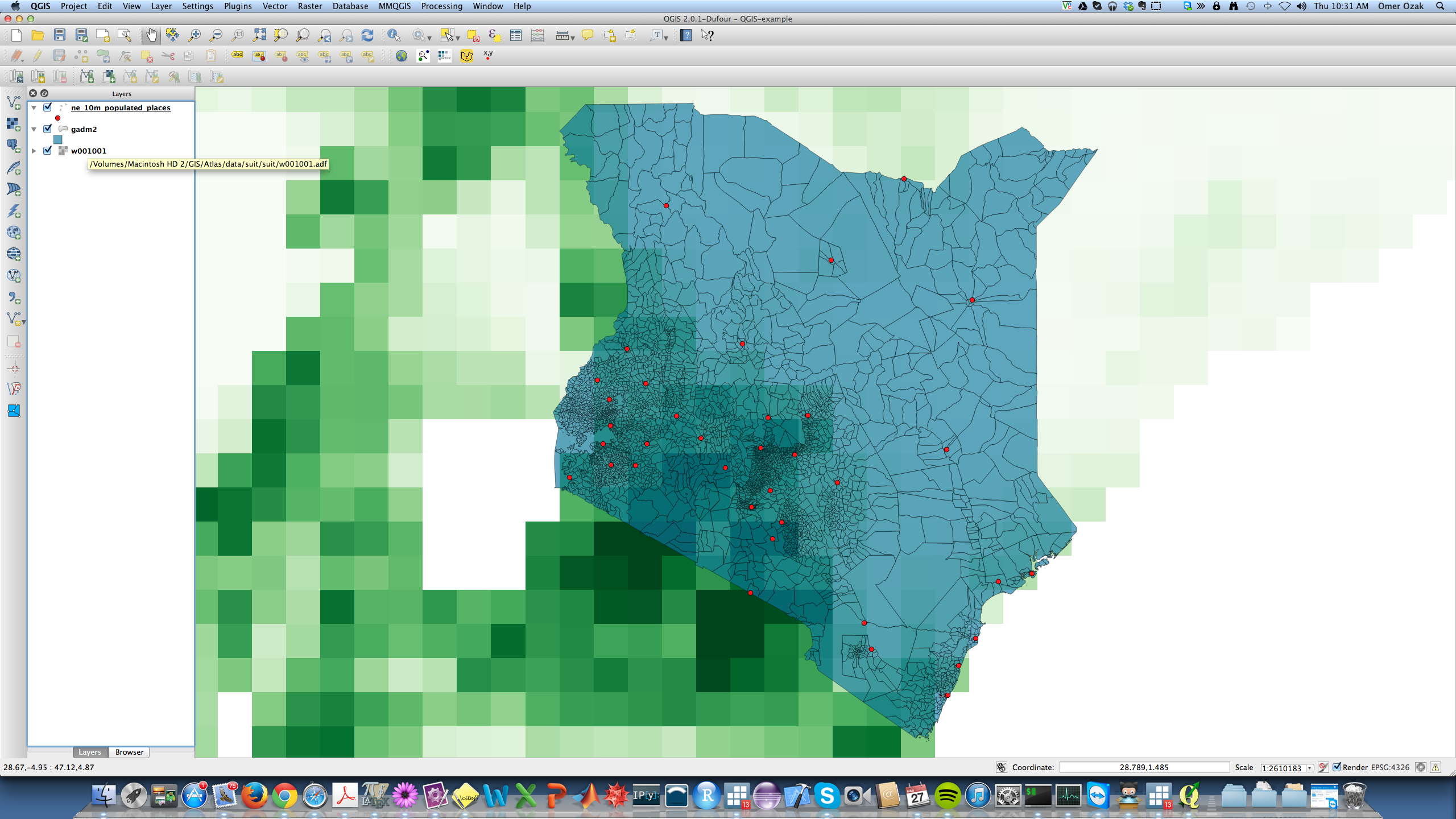
- #Best raster format for qgis driver#
- #Best raster format for qgis software#
- #Best raster format for qgis free#
IDRISI vector data files have a VCT extension along with an associated vector documentation file with a VDC extension. In addition, GPX files optionally stores location properties including time, elevation and geoid height as tags. The minimum requirement for GPX are latitude and longitude coordinates. Because GPX is an exchange format, you can openly transfer GPS data from one program to another based on its description properties. GPS Exchange format is an XML schema that describes waypoints, tracks, and routes captured from a GPS receiver. The vertical component (altitude) is measured in meters from the WGS84 EGM96 Geoid vertical datum. The longitude and latitude components (decimal degrees) are as defined by the World Geodetic System of 1984 (WGS84). KML/KMZ became an international standard of the Open Geospatial Consortium in 2008. KML was developed by Keyhole Inc which was later acquired by Google.KMZ (KML-Zipped) replaced KML as being the default Google Earth geospatial format because it is a compressed version of the file. This GIS format is XML-based and is primarily used for Google Earth. This is because GML results in more data for the same amount of information.

There is generally more overhead when comparing GML with GeoJSON. Each feature has a list of properties, geometry (points, lines, curves, surfaces, and polygons), and a spatial reference system. Similar to GeoJSON, GML can be updated in any text editor. GML stores geographic entities (features) in the form of text. And eXtensible Markup Language (XML) is both human-readable and machine-readable. GML allows for the use of geographic coordinates extension of XML. Fortunately, JavaScript can convert JSON to binary. But JavaScript only understands binary objects. Webmaps browsers understand JavaScript so by default GeoJSON is a common web format. GeoJSON has a straightforward syntax that you can modify in any text editor. GeoJSON store objects within curly braces and in general have less markup overhead (compared to GML). This includes vector points, lines and polygons as well as tabular information. GeoJSON stores coordinate as text in JavaScript Object Notation (JSON) form. The GeoJSON format is mostly for web-based mapping. Geographic JavaScript Object Notation (GeoJSON) PRJ is the projection system metadata.XML is the associated metadata.SBN is the spatial index for optimizing queries.SBX optimizes loading times.You can optionally include these files but are not completely necessary. It’s so ubiquitous that it’s become the industry standard.īut you’ll need a complete set of three files that are mandatory to make up a shapefile. All commercial and open source accept shapefile as a GIS format.
#Best raster format for qgis driver#
To generate COG files with GDAL, use the new COG driver instead of the GeoTIFF driver.The shapefile is BY FAR the most common geospatial file type you’ll encounter. The number of native COG clients is growing and COG clients can access the files directly in the cloud storage without downloading, which can be immensely useful. If you are storing your images online, in a cloud “object store” like AWS S3, or Azure Blob Storage, or Google Cloud Storage, or Cloudfare R2, then using COG as your format makes a lot of sense. Wait, I haven’t mentioned the new kid in imagery serving, the “ cloud optimized GeoTIFF”! Maybe that is the answer now and all this stuff is moot?Īs always in software, the answer is “it depends”. overviews, for fast access of zoomed out views of the data.internal tiling, for fast access of random squares of data, and.YCBCR color, for even smaller size, and.(optionally) a more agressive JPEG quality setting, and.JPEG compression, for visually fine results with much space savings, and.GeoTiff, so you can avoid proprietary image formats and nonsense, with.So, to sum up, your best format for image serving is:

#Best raster format for qgis free#
Unfortunately, GeoTiffs are almost never delivered this way, as I was reminded today while downloading a sample image from the City of Kamloops open data site (But nonetheless, thanks for the great free imagery, Kamloops!) In my experience, the best format for image serving, using open source rendering engines (MapServer, GeoServer, Mapnik) is: GeoTIFF, with JPEG compression, internally tiled, in the YCBCR color space, with internal overviews. “So, what’s the best image format for map serving?”. Generally the decode step is incredibly CPU intensive, presumably because of the fancy wavelet math that makes them so small in the first place.

#Best raster format for qgis software#
Unfortunately, outside of proprietary image server software I’ve never seen them be fast and nice and small at the same time. “Is it MrSid? Or ECW? those are nice and small.” Which indeed they are. “What’s the best image format for map serving?” they ask me, shortly after I tell them not to serve their images from inside a database.


 0 kommentar(er)
0 kommentar(er)
